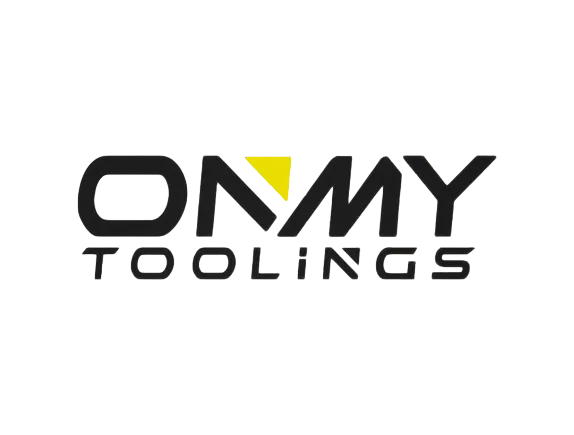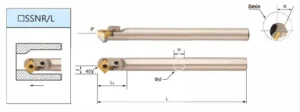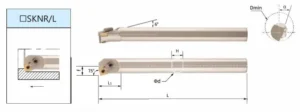SNMG 삽입 공구 홀더
A SNMG Insert Tool Holder is a widely utilized type of turning tool holder specifically engineered to securely clamp SNMG style indexable cutting inserts. The ISO designation “SNMG” indicates a square-shaped insert with a 90-degree nose angle, a clearance angle, neutral cutting action, and a central mounting hole. These robust inserts are commonly selected for medium to heavy-duty turning operations, including roughing, semi-finishing, and even some finishing applications across a diverse range of materials such as steel, stainless steel, cast iron, and high-temperature alloys.
The primary role of an SNMG Insert Tool Holder is to provide a highly stable and accurately aligned platform for the SNMG insert. This ensures efficient material removal, excellent chip control, and the ability to achieve desired surface finishes. The holder features a precision-machined pocket that is precisely shaped to match the SNMG insert, enabling secure and repeatable clamping, typically achieved via a screw or lever mechanism. This firm grip prevents insert movement or vibration during machining, even under significant cutting loads.
SNMG inserts are favored for their strength and economy, offering four distinct cutting edges per insert (two on each side), which can be indexed as they wear, leading to extended tool life and reduced tooling costs. The corresponding SNMG Insert Tool Holders are designed for user-friendliness, allowing for quick and straightforward insert changes, minimizing machine downtime. Available in various shank sizes and configurations to suit different machine tool types and application needs, SNMG Insert Tool Holders are a cornerstone in many turning and machining environments.
자주 묻는 질문
First, make sure the tool holder and insert are clean and free of debris. Align the insert with the slot in the tool holder according to the markings or grooves on the tool holder, and then insert it evenly and firmly until it is fully seated. Check if the insert is installed firmly by gently pulling it.
Consider the size, shape, and cutting edge type of the insert. Make sure the insert’s inscribed circle diameter, thickness, and other dimensions match the tool holder’s specifications. Also, select the appropriate insert material and coating according to the workpiece material and processing requirements.
In general, it is possible, but it is necessary to ensure that their dimensions and installation methods are consistent. However, different brands of inserts may have differences in quality and performance, which may affect the cutting effect and tool life. It is recommended to choose inserts from well – known brands to ensure stability and reliability.
Optimize the cutting parameters, such as cutting speed, feed rate, and cutting depth, according to the workpiece material and insert characteristics. Keep the cutting edge sharp and replace the insert in a timely manner when it is worn. Use appropriate cutting fluids to cool and lubricate during processing to reduce tool wear and improve surface quality.
Common problems include insert wear, chipping, and vibration. Insert wear can be reduced by choosing the right cutting parameters and insert materials. Chipping may be caused by excessive cutting force or impact, so it is necessary to check the cutting parameters and tool installation. Vibration can be reduced by adjusting the cutting parameters, improving the rigidity of the tool holder and workpiece, or using anti – vibration tools.
Regularly clean the tool holder to remove dirt, debris, and cutting fluid residues. Check the tool holder for damage or wear, especially the locking mechanism and insert slot. Lubricate the moving parts of the tool holder regularly to ensure smooth operation.
Store the tool holder in a dry, clean, and ventilated place to prevent rust and corrosion. Avoid placing it in an environment with high humidity or dust. It is best to use a special tool storage box or cabinet to store the tool holder to protect it from damage.
도구 홀더는 당사에 문의하십시오
참고 : 우리는 도매 공급 업체이며 최소 주문 수량이 있습니다.


